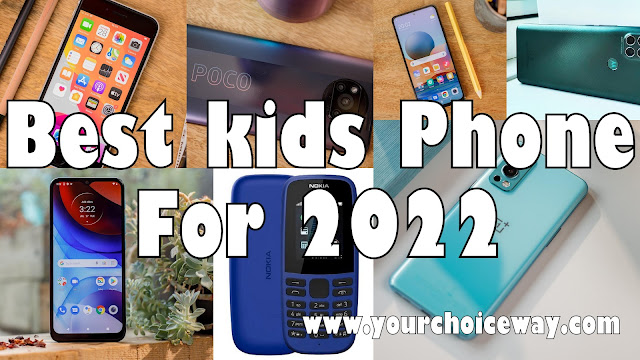We explain what you should look out for when buying a VR headset, along with our selection of the best PC, console, smartphone and standalone VR headsets on the market right now.
What Is The Best VR Headset That You Can Buy?
2019 was a great year in the world of virtual reality, with updated VR headsets from the likes of Oculus and HTC now on sale. Even the prices have begun to drop, making VR accessible to more people than ever before.
The flip side is that there are now more VR headsets on the market than ever before, making it hard to choose one to buy. Don’t fret; we at Tech Advisor have used all of the popular VR headsets, and here’s where we tell you what to look out for when buying a headset, along with our recommendation of the best VR headsets on the market right now.
Best VR Headsets Available In 2020
1. Oculus Rift S
The best virtual reality headset on the market right now is the Oculus Rift S; it boasts a range of improvements over the original and fixes most of the complaints without a price increase. The Rift S is comfortable, boasts high-end optics and offers inside-out tracking that completely eliminates the need for external sensors like those required by the HTC Vive.
Like the original, the Rift S ships with two Oculus Touch controllers that lets you reach out and interact with the virtual world around you, enhancing the virtual experience tenfold. Our only complaint is that they’re powered by standard AA batteries, opposed to a built-in rechargeable battery.
It’s not the perfect headset though; it doesn’t feature built-in headphones like the original, and the use of a single display instead of dual displays means it offers a fixed IPD of 63.5mm. That should be fine for most users, but those with wider IPDs may struggle to enjoy the experience on offer.
Find out more in our Oculus Rift S review.
2. HTC Vive Cosmos
It’s the modular nature that makes the Cosmos range unique, and why it costs a little more too. Rather than having to buy an entirely new headset when HTC reveals new tech, Cosmos owners can simply buy a new faceplate and attach it to their existing headset, offering huge savings down the line.
The Cosmos itself, with six-camera tracking, offers a decent VR experience for low- to mid-intensity VR games, but the camera tracking isn't perfect and the loss of tracking in fast-paced VR titles can be frustrating at times.
But that’s where the Cosmos Elite comes in: for £200/$200 more, you can grab a Cosmos with true 1:1 SteamVR tracking, but at the cost of long setup times and having to use the first-gen Vive wands.
Read our full HTC Vive Cosmos review
3. Oculus Quest
Of course, there are slight differences between the Rift S and the Quest, but if you’re a VR enthusiast without access to a high-end gaming PC, it’s the ideal entry into the world of high-end virtual reality.
Find out more in our Oculus Quest review.
4. PlayStation VR
It also boasts ultra-low latency (18ms) and a 120Hz refresh rate, which is better than the Oculus Rift S and the HTC Vive's 90Hz offering. It means that, theoretically, beautiful 120fps gameplay is possible, although we’re not sure the PS4 (or even the PS4 Pro) could handle it.
It seems that Sony had the same thought, and provides an additional box (smaller than the PS4) that handles the brunt of the graphics processing. It’ll track the position of your head, and can also be used with Sony’s (failed) Move controllers, giving the old controllers a new lease of life.
The tracking is basic though; it uses a PlayStation Camera, and the area that you can move around in is very small - the smallest of the 'big three' VR headsets. It's designed for sit-down VR experiences, and it does it well.
Find out more in our PlayStation VR review.
5. Oculus Go
The display is impressive too, boasting a fast-switch LCD display that almost completely removes SDE, an issue prevalent even in high-end VR headsets.
The content available is more entertainment-focused than what you'll find from the likes of the Rift S and Vive, but it's a great option for casual gamers and general VR enthusiasts.
Find out more in our Oculus Go review.
6. Google Cardboard
It uses your existing smartphone as the display and brains of the VR system, allowing the company to cut the cost and enable users to use existing VR apps available for iOS and Android.
If building the Google Cardboard seems like an effort to you, then you can buy one for around £10-15. It should fit any smartphone up to 6in, so if you’re interested in VR on a budget, it’s an ideal option.
VR Headset Buying Advice
So, what kind of things should you consider if you’re on the market for a VR headset?
Mobile, PC or standalone?
The biggest factor to consider when on the market for a VR headset is how you’re planning on powering it. There are three types of VR headset on the market at the moment; smartphone-powered, PC-powered or standalone, with the latter being a relatively new option for prospective VR users.
Mobile VR headsets are shaped like a VR headset, but they require a smartphone for the display, internals, tracking and everything else needed to provide a mobile VR experience. This is generally thought of as a beginner’s VR headset; it gives you access to a budget range of experiences, 360-degree videos and basic games, but doesn’t provide much in the way of actual interaction with virtual environments.
The next step up would've been Samsung's Gear VR or Google Daydream. The two VR platforms aimed to deliver a higher quality experience than those provided by generic mobile viewers. Both platforms had dedicated app stores full of VR experiences and games, and both came with 3DOF controllers that allowed you to interact with the games and apps you download.
The problem is that both Daydream and Gear VR have been discontinued, suggesting these low-level VR headsets may not be as popular as once thought.
If mobile VR isn’t your cup of tea, the second option available to you is standalone VR. These started appearing in 2018, with the Oculus Go and Oculus Quest being the two most popular option on the market at the moment. These are, as the name suggests, standalone VR headsets that don’t require a smartphone or PC for use.
The experience is similar to premium mobile VR headsets like Gear VR and Google Daydream, and come with a dedicated controller for VR interaction. These are slightly more expensive than mobile VR headsets but with upgraded visuals and simplicity of use compared to cheaper options, it’s ideal for many consumers.
Finally, you have the option to buy a PC-powered VR headset. These headsets are the most capable on the market, providing high-end games and VR experiences with incredibly accurate location-based tracking and advanced controllers for full immersion. The catch? The headsets are also the most expensive available, starting at around £400+, and require a £500+ PC to be able to power the experiences.
Controllers
Though it may not sound like it, controllers are a very important area when it comes to picking a VR headset. That’s because the controllers vary depending on the system, with some offering true 1:1 positional tracking while others don’t. Controllers are your gateway into the virtual world, allowing you to reach out and interact with the environment, so you want them to be as accurate and comfortable as possible.
Generally speaking, the high-end VR headsets like the Vive Cosmos Elite offer great controllers with true 1:1 positional tracking, while inside-out tracking like that offered from the Rift S, Quest and standard Vive Cosmos is a little more unreliable. PlayStation’s VR headset offers basic positional tracking, but it’s not quite as accurate as Oculus’ and HTC’s options.
Tracking
Speaking of controller tracking, tracking, in general, is another important area to consider in the world of virtual reality. Mobile VR headsets only offer 3DoF, compared to 6DoF on offer by more premium headsets. 3DoF means that you’ll be able to stand in place, look around, up and down, but any movement forwards, backwards, up or down won’t be tracked.
6DoF, on the other hand, has the ability to track your location within the physical space. This really improves immersion as, with the Rift S, Quest and Vive Cosmos, you’re able to physically walk around virtual worlds, bend down and retrieve items from the floor.
Resolution, refresh rate and FOV
It’s a good idea to check out the resolution and refresh rate of any VR headset before buying, as both are integral to a decent VR experience. The resolution is fairly self-explanatory: the higher the resolution, the better quality the images produced by the display will be. It’ll mean crisper edges and easy-to-read text, and a generally more premium VR experience.
But, the resolution doesn’t matter if the refresh rate is terrible. There were a lot of tests undertaken in the early days of VR to work out the ideal refresh rate to combat motion sickness experienced by early VR users. The general consensus is that 90Hz is the minimum requirement for fast-paced VR, although you can get away with 70Hz if the app or game isn’t particularly intense.
Anything lower than 60Hz, though, and you’ll start to notice motion sickness when using VR as the display takes a little too long to refresh when you move, causing lag. Thankfully, most mainstream VR headsets offer at least 70Hz, so you shouldn’t have to worry, but it’s something to consider if you’re looking at non-branded VR headsets.
Lastly, field of view – or FOV as its commonly referred to – essentially gives you an idea of how immersive the VR headset is. Generally speaking, you should aim for a VR headset that provides a FOV of between 100- and 110-degrees, which seems to be the market cap (for the moment anyway!). For reference, human eyes have a FOV of around 220 degrees.
View the original article here






















0 comments:
Post a Comment